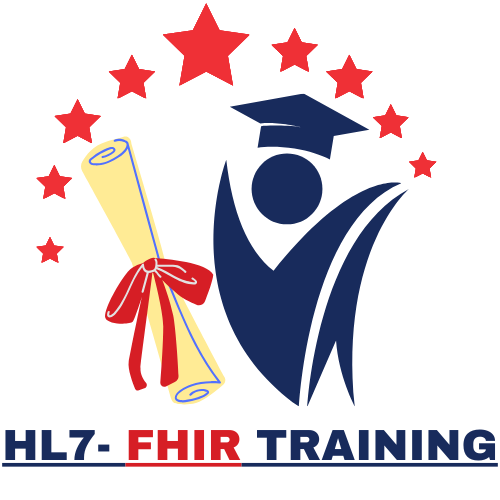HL7 Training – Best Online HL7 Certification Course in India
Are you looking for the best HL7 Training in India? Our HL7 online training from India is designed for healthcare professionals, IT specialists, and developers who want to master healthcare interoperability and HL7 standards. Whether you’re a beginner or an experienced professional, our HL7 Training institutes in India provide comprehensive, hands-on learning with expert trainers.

Course Curriculum
What is HL7?
HL7 (Health Level Seven) is a set of international standards for the exchange, integration, sharing, and retrieval of electronic health information. It enables different healthcare systems to communicate with each other, ensuring interoperability across platforms.
In this module, you will learn
- Background and evolution of HL7 standards
- Importance in modern healthcare systems
- Overview of HL7 versions (v2.x, v3, CDA, and FHIR)
- Use cases and real-world examples
Understanding HL7 Messages
HL7 v2.x messages are made up of segments, fields, components, and sub-components. Each message is a collection of structured data transmitted as ASCII text, typically over TCP/IP.
You will explore:
- Basic HL7 message anatomy (MSH, PID, etc.)
- Delimiters and encoding characters
- Message triggers and control structures
- Real examples of message formats
Core HL7 Message Types
Different HL7 messages are used depending on the type of information being exchanged. You’ll learn to identify and analyze the most frequently used message types in clinical settings.
Key topics:
- ADT (Admit, Discharge, Transfer) – Patient movements
- ORM (Order Entry) – Orders for lab/radiology/etc.
- ORU (Observation Result) – Lab/test results
- DFT (Detailed Financial Transaction) – BillingEach message type includes specific segments tailored for the event.
Hands-On with HL7 Messages
Parsing and generating HL7 messages is a critical skill. This module covers how to interpret, extract, and create valid HL7 messages for integration workflows.
You’ll learn:
- Using tools to parse and edit messages
- Breaking down a message into segments and fields
- Building HL7 messages manually and programmatically
- Handling optional and repeating segmentsTools used include HL7 Notepad, 7edit, and custom scripts.
Validating and Debugging HL7 Messages
This section focuses on ensuring HL7 messages conform to standards and how to resolve common issues during integration.
In this module:
- Common HL7 message errors and how to fix them
- Using validation tools and simulators
- Log analysis and error reporting
- Message acknowledgment (ACK/NACK) conceptsWe’ll walk through real scenarios from integration projects and troubleshooting exercises.
Who Should Attend ?
Healthcare IT Professionals
Integration Engineers
HL7 Beginners & Developers
HL7 Course Curriculum
-
In-depth coverage of major HL7 message types:
-
ADT (Admission, Discharge, Transfer)
-
ORU (Observation Result)
-
ORM (Order Entry)
-
SIU (Scheduling)
-
-
Triggers and event types that define when messages are sent (e.g., A01, A03, O01, R01).
-
Understand the message lifecycle in hospital environments
- Field-level explanation of core HL7 segments.
- Repeating fields, escape characters, component and subcomponent usage.
- Real-time parsing of raw messages and extracting key information from segments.
- Use case-based learning: Sample project walkthroughs from hospitals and labs.
- Learn how HL7 is implemented in integration engines like Mirth Connect.
- Mapping HL7 messages to internal databases or third-party systems.
-
Hands-on with tools like 7Edit, HL7 Inspector.
-
Validate, parse, and troubleshoot HL7 messages.
-
Simulate HL7 communication between systems using free desktop tools.
-
Gain a foundational understanding of Health Level Seven (HL7) standards and their significance in healthcare data exchange.
-
Overview of HL7 versions: v2.x (widely used), v3 (model-based), CDA (Clinical Document Architecture), and FHIR (Fast Healthcare Interoperability Resources).
-
Explore the role of HL7 in clinical, administrative, and financial healthcare workflows.
-
Understand where and how HL7 is used in hospitals, labs, EMRs, and insurance systems.
-
Detailed structure of HL7 v2.x messages, including message headers, segments, fields, components, and delimiters.
-
Explanation of key segments: MSH (Message Header), PID (Patient Identification), PV1 (Patient Visit), OBX (Observation Result), ORC (Order Control).
-
Learn how to read, interpret, and construct HL7 messages for real-world scenarios.
-
Message building exercises for different workflows (ADT, ORM, ORU, SIU, etc.).
❓ FAQ Section – HL7 Training Course
1. What are the prerequisites?
No prior experience with HL7 is required to take this course. However, having a basic understanding of healthcare systems, electronic health records (EHRs), or healthcare IT terminology can help you grasp the concepts more easily.
Technical professionals, analysts, or anyone involved in healthcare data exchange will benefit from this training — even without programming skills.
2. Is this beginner friendly?
Absolutely! This course is designed with beginners in mind. We start with the fundamentals of HL7 and gradually build up to more advanced concepts like message parsing, troubleshooting, and integration workflows.
Interactive examples, real-world scenarios, and hands-on exercises make it easy for first-timers to follow along and learn at their own pace.
3. Do I get a certificate?
Yes! Upon successful completion of the course, you’ll receive a personalized certificate of completion. This certificate validates your knowledge of HL7 and can be a valuable addition to your professional portfolio or LinkedIn profile.
We also provide badge icons you can use to showcase your new skill online.

–Priya K., Hyderabad
Healthcare Integration Consultant⭐⭐⭐⭐⭐"Structured and Comprehensive!" “The FHIR training helped me understand APIs and RESTful architecture in a simple, practical way. The examples and sandbox exercises were fantastic for real-world application.</p>

– Vikram S., Pune
Software Developer⭐⭐⭐⭐⭐"Perfect for Developers!" “Coming from a software background, this FHIR course bridged the gap between tech and healthcare. The trainer explained resources, bundles, and profiles with great clarity. Loved the coding exercises!”</p>

— Ankit J., Mumbai
Health care Proffesional⭐⭐⭐⭐⭐ "Value for Money with Real Projects!" “I appreciated the mix of theory and project-based learning. Working with Mirth Connect and HL7 messages gave me the confidence to apply what I learned on the job.”



